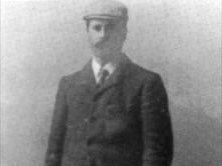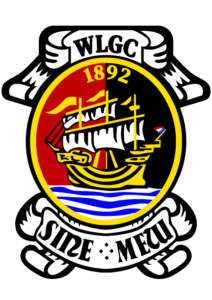Office Bearers
| Honorary President | Mr Tom B Fraser |
| Honorary Vice Presidents | Mr Len Ainslie |
| Club Captain | Donald Macleod |
| Vice Captain | Gill Scott |
| Council Member | Diana McGowan |
| Past Captain | Bryan Gale |
| Match Secretary | Peter Ritchie |
| Greens Convenor | Vacant |
| Junior / Juvenile Convenor & Safeguarding Officer | Dale Marsters |
| Finance Convenor | Jason Little |
| Projects Development | Jack Cunningham |
| Director of Golf & PGA Head Professional | Caimin Condren |
Club History
The original course comprised nine holes laid out in the area referred to in the lease as Bonny-tounhill, and some of these holes are still in existence. It is a site of some antiquity and has been known by several names in the past – Argad, Airngoth, Airngath, Irongath and because of its commanding position overlooking the Forth Valley and beyond, Glower-ower-em.
It is claimed to be the site of a battle between a Pictish leader, Argadus, and the Roman invaders. On at least two sites on the Course, stone coffins and various artefacts have been excavated. In 1924 a very fine stone axe was found and presented by the then Club President H. M. Cadell to the Society of Antiquities in Edinburgh. When the present 4th green was being prepared in 1925, two long slab-laid graves and a small stone cist-like structure were discovered. A jet ring identified with the Bronze Age was also found and presented by the then Captain, Dr W. A. Shafto to the Scottish National Museum. Many members recall that the 8th green, still known as the Coffin Green was originally cut in the shape of a coffin. Nowadays that shape has gone, but the name still has considerable relevance to the older members as they face the tiring climb to the green.
The Course was laid out by the famous Willie Park Jnr., who had won the Open Championship in 1887 and 1889, and who was already making a name for himself as a golf architect. Willie had high words of praise for the Course, commending “the sporting qualities of the ground” and claiming that the turf on the hill could not be bettered – “it yields to the tread like a Persian carpet”. Even for these days, however, the course could not be considered long. It measured barely 2,000 yards. Nevertheless, it was anticipated that a first-class amateur would take 80 strokes to complete two rounds, while for ordinary mortals a score of 90 was to be congratulated. This prediction proved correct when Currie Liddle won the first trophy, the Melville Bowl, with a scratch 90 in 1893.

The layout of the original Course would not be unfamiliar to many of the older members since it incorporated several of the holes used prior to the major course re-development in 1979. Some of the names persisted, e.g. Tel-El, Home and Roman Road, but others such as The Long Hole, Glower-ower-em and The Linlithgow Hole have disappeared. In the mid-seventies, a clutch of young men broke through to record some of the finest highlights in the in the history of the Club: John Cuddihy reached the final of the Scottish Boys’ Championship in three successive years, only to fail at the last hurdle on each occasion. He went on to represent his Country at Boys, Youth and Senior Levels before turning Professional in 1979. In one weekend in June 1976, Alan Ramsay was in the West Lothian Club Team which won the Courier Trophy at Pumperston on the Friday night. On the Saturday he won the Dumbarton Open by beating internationalist Charlie Green and on the Sunday he was back on his home course to win the West Lothian Club Championship for the third time. Alan went on to win the Championship twice more in 1976 and 1977. Charlie Cox won the Championship for the first time in 1974 before going on to win a record ten Championships in total. In 1980 he won his first Lothian’s Champion of Champions Tournament by beating the Dalmahoy Champion at Bruntsfield and he won this again in 1988.
Possibly because of the success of these young men, increasing pressure was put on the Council to improve and extend the existing course. Bo’ness Town Council negotiated a land deal with a local farmer, which meant that a substantial area of ground to the north and west of the existing course would be available for extension. In addition, both the Town Council and Falkirk District Council were prepared to allocate large grants to assist in the course development. Some members resisted the development, on the grounds that the new course would be too long, too difficult and jeopardise the financial future of the Club. The majority of members supported the Council’s arguments that the existing course was too short, had too many blind holes and could not sustain a larger membership. Consequently, the golf architect Fraser M. Middleton was retained to lay out the new course over an area of 148 acres in 1975, with the target set for opening the course in 1979. The new course was opened for play in August 1979, but the official celebration was delayed until September 1980 when the Club held a Pro-Am. Jim Farmer lifted the top prize of £600 and the winning team comprised Bill Murray, Ian Logan and Willie Neill.
The Hope Monument is a prominent landmark on the course. It was erected in the memory of Brigadier General Hon. Adrian Hope, C.B., who was killed in 1858, in his 38th year, in the attack on Fort Rooeah (Roodamow) in Oude during the Indian Mutiny and again in 1988.
